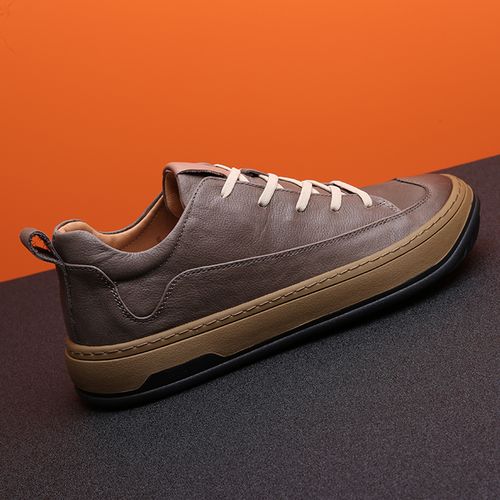Discover how factory-direct purchasing cuts costs and ensures quality for casual footwear. Learn key steps to negotiate MOQs, vet factories, and optimize your wholesale supply chain.
—
Introduction
The global casual footwear market is valued at $430 billion, driven by demand for versatile, comfortable shoes. For retailers, startups, and brands, buying factory-direct casual shoes eliminates middleman markups, ensures design control, and unlocks economies of scale. This guide reveals how to partner with manufacturers directly, avoid common pitfalls, and secure bulk orders that align with your budget and quality standards.
—
Why Choose Factory-Direct Casual Shoes?
1. Cost Efficiency
By bypassing distributors, brands save 20–45% on per-unit costs. Factories offer:
– Wholesale pricing starting at $3–$8 per pair (depending on materials and MOQ).
– Reduced logistics fees via consolidated shipping.
2. Customization Freedom
Factory-direct partnerships enable:
– Design modifications (logo placement, colorways, outsole patterns).
– Material flexibility (canvas, suede, recycled polyester).
– Niche styles (slip-ons, espadrilles, chunky sneakers).
3. Quality Assurance
Direct collaboration ensures:
– Pre-production samples for approval.
– Factory audits for ISO 9001/ISO 14001 certifications.
– AQL 2.5 inspections before shipment.
—
Step-by-Step Guide to Sourcing Factory-Direct Casual Shoes
Step 1: Define Your Requirements
– Product specs: Casual styles (e.g., slip-on loafers, canvas sneakers).
– Materials: Breathable mesh, vegan leather, or technical fabrics.
– MOQ: Most factories require 500–1,000 pairs per design.
– Target market: Specify regional requirements (e.g., EU sizing, ASTM safety standards).
Step 2: Source Reliable Factories
– Use platforms like Alibaba or Global Sources to filter verified suppliers.
– Request product catalogs and factory audit reports.
– Prioritize factories with:
– OEM/ODM experience in casual footwear.
– Scalable production (e.g., 500–50,000 pairs/month).
Step 3: Collaborate on Design & Prototyping
– Submit CAD files or sketches for technical feasibility analysis.
– Review 3D renderings to validate aesthetics and ergonomics.
– Order 2–3 samples (cost: $200–$500 per iteration) for fit and durability testing.
Step 4: Negotiate Production Terms
– Pricing models: FOB (factory pays shipping) vs. CIF (factory covers insurance and freight).
– Lead times: Standard orders take 30–45 days; custom designs may extend to 60 days.
– MOQ flexibility: Some factories accept smaller batches for seasonal styles.
Step 5: Execute the Order
– Conduct pre-shipment inspections (e.g., random AQL sampling).
– Review packing lists and bill of lading details.
– Confirm customs documentation (COO, FTA certificates if applicable).
—
Key Challenges & Solutions
Challenge 1: Sizing Inconsistencies
– Solution: Request factories to use regional foot databases (e.g., US/EU sizing charts).
Challenge 2: Material Sourcing Delays
– Solution: Source materials locally or partner with factories that hold bulk inventory.
Challenge 3: Communication Barriers
– Solution: Use professional translation tools and hire bilingual project managers.
—
Cost Breakdown & Savings Tips
Component Cost Range Savings Strategy
Base Shoe Model $3–$8 per pair Bulk orders ≥10,000 pairs reduce costs by 15%
Prototyping $200–$500 per design Reuse lasts/molds for seasonal designs
Shipping (FOB) $1.2–$3 per pair Use LCL shipping for smaller orders
Packaging $0.3–$0.8 per pair Custom branding adds $0.2–$0.5/pair
Pro Tip: Negotiate volume-tiered pricing (e.g., 5% discount on orders ≥5,000 pairs).
—
FAQs: Factory-Direct Casual Shoes
Q: Can I customize insoles or outsoles?
A: Yes, most factories offer custom cushioning systems or tread patterns for an additional $0.5–$1.5 per pair.
Q: What’s the lead time for a new design?
A: Initial samples take 7–10 days; bulk production requires 30–45 days.
Q: How to handle defective units?
A: Include a quality clause (e.g., ≤1% defect rate) and require factories to cover rework costs.
—
Conclusion
Factory-direct casual shoes empower brands to reduce costs, maintain design integrity, and scale efficiently. By prioritizing factories with transparent pricing, ISO certifications, and proven expertise, businesses can secure competitive wholesale terms while delivering high-quality products to global markets. Start by sharing your design brief with verified manufacturers and requesting detailed cost breakdowns today.
—
SEO Optimization Strategy:
– Primary Keywords: “factory direct casual shoes,” “wholesale casual shoes factory,” “bulk buy sneakers factory”
– Secondary Keywords: “customizable canvas shoes manufacturer,” “OEM slip-on loafers,” “casual shoe MOQ”
– Semantic Variations: Terms like “cheap bulk sneakers,” “direct from factory footwear,” “retailer-friendly shoe sourcing” align with buyer intent.
– Internal Linking: Connect to related guides (e.g., “How to Negotiate FOB Shipping Terms”).
– Content Refresh: Update cost tables biannually to reflect material price trends.
This structure improves search visibility for commercial queries while positioning your factory as a cost-effective, quality-driven partner.
Article link:https://www.vlefooena.com/manufacturer/3661/


No reply content